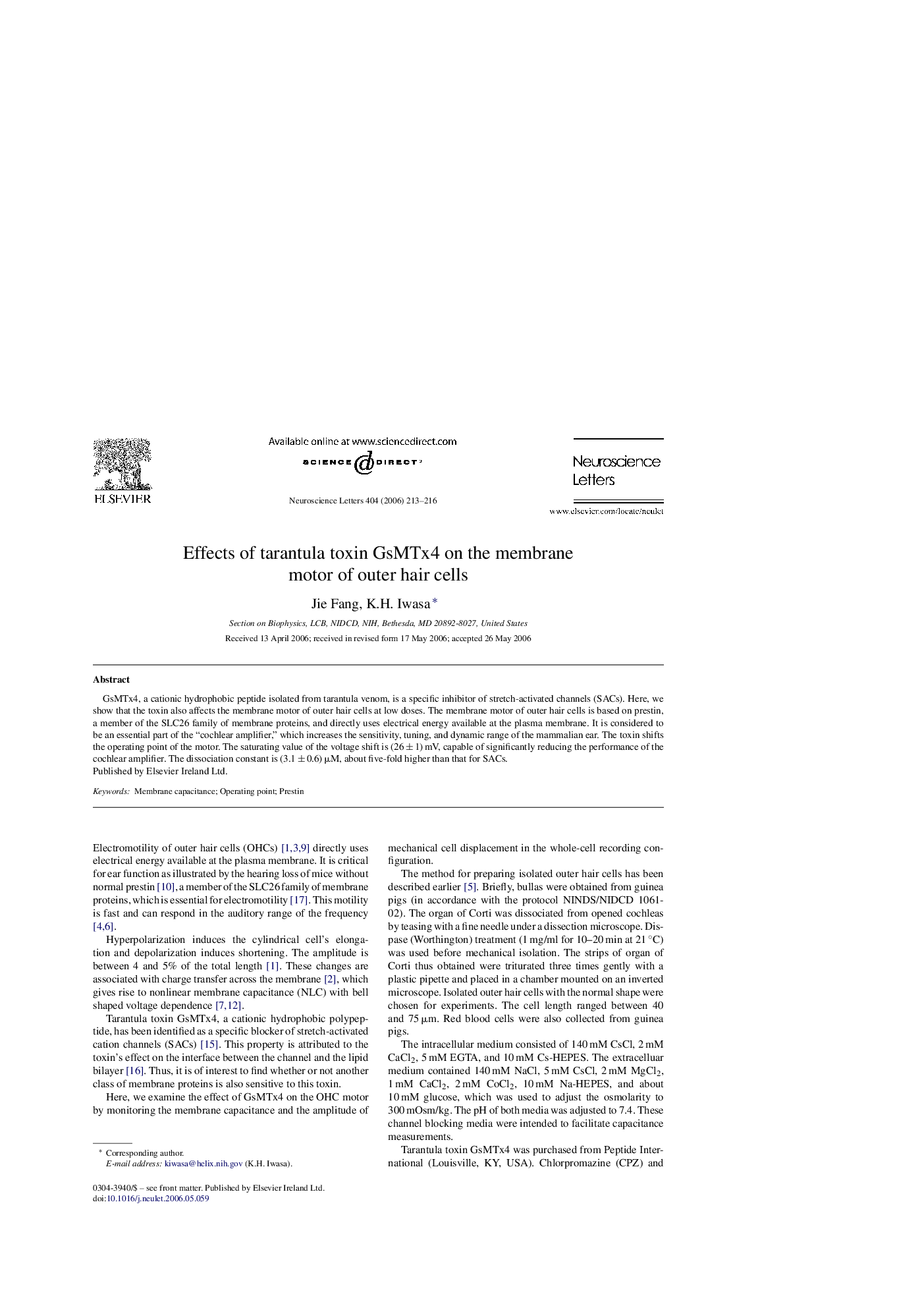| Article ID | Journal | Published Year | Pages | File Type |
|---|---|---|---|---|
| 4350311 | Neuroscience Letters | 2006 | 4 Pages |
Abstract
GsMTx4, a cationic hydrophobic peptide isolated from tarantula venom, is a specific inhibitor of stretch-activated channels (SACs). Here, we show that the toxin also affects the membrane motor of outer hair cells at low doses. The membrane motor of outer hair cells is based on prestin, a member of the SLC26 family of membrane proteins, and directly uses electrical energy available at the plasma membrane. It is considered to be an essential part of the “cochlear amplifier,” which increases the sensitivity, tuning, and dynamic range of the mammalian ear. The toxin shifts the operating point of the motor. The saturating value of the voltage shift is (26 ± 1) mV, capable of significantly reducing the performance of the cochlear amplifier. The dissociation constant is (3.1 ± 0.6) μM, about five-fold higher than that for SACs.
Related Topics
Life Sciences
Neuroscience
Neuroscience (General)
Authors
Jie Fang, K.H. Iwasa,
